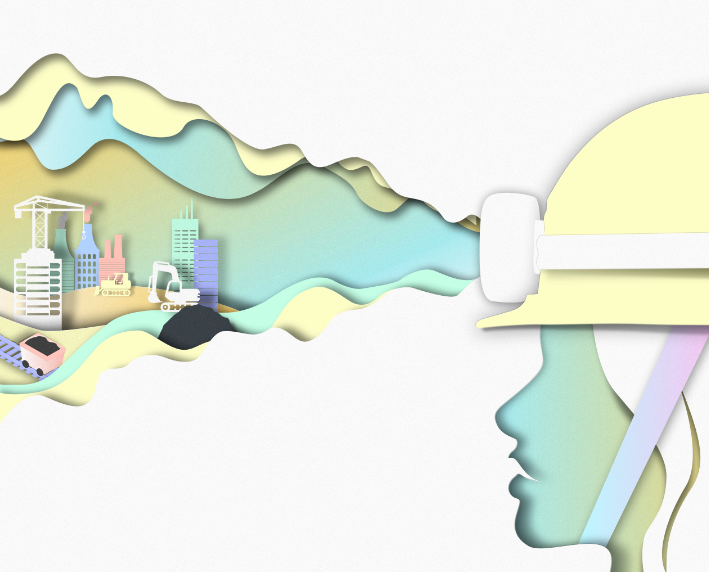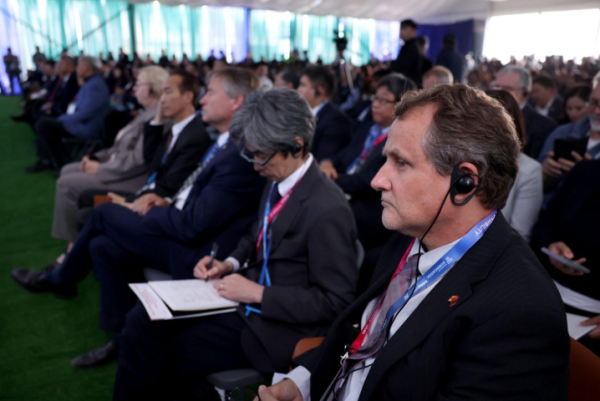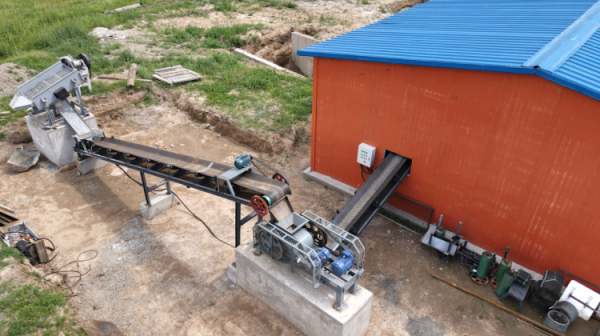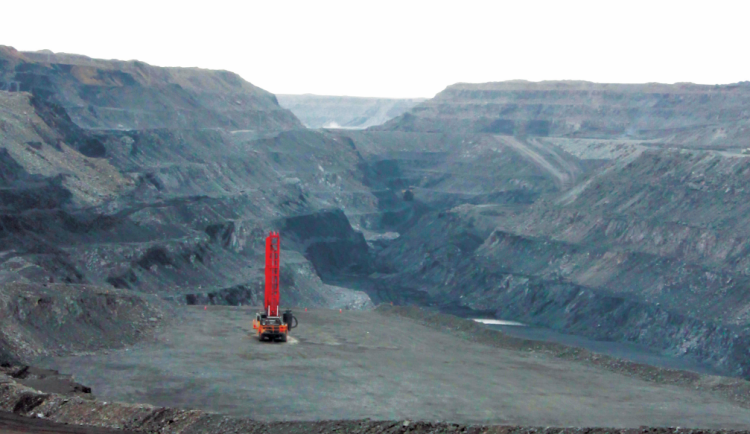 MYAGMARSUREN.E
MYAGMARSUREN.EIn this graph, readers can observe the impact of the fluctuating growth and decline of the mining industry in Mongolia on female employment within this sector. The mining industry has witnessed an increase in female employment during boom years, but conversely, more layoffs during downturns.
Between 2010 and 2012, Mongolia's mining sector experienced its most significant period of growth. However, starting in 2013, the global mineral market downturn had a profound impact, resulting in a substantial deceleration in mining growth in the subsequent years. Notably, the coal industry, which had shown promising signs, experienced a rapid decline, with major exporting mines regressing to levels last seen in their initial years of operation in 2009.

This decline persisted until the conclusion of 2016, effectively marking 2014-2016 as years of stagnation in the mining industry. Nonetheless, a resurgence occurred as the market rebounded from 2017 onwards, leading to renewed growth in the mining sector, reaching its peak in 2019. Unfortunately, in 2020, the mining industry faced a downturn once more due to the Covid-19 pandemic. In this decade-long cycle, the mining industry exhibited a positive impact on women during the boom and a negative impact during the bust cycles. During the mining downturn of 2014, mining jobs decreased by 17.8 percent compared to the previous year.
Conversely, during years of mining expansion, job growth for both men and women was roughly equivalent,
and in some instances, women even saw greater job growth.
Among these losses, male employment declined by 13.6 percent, while female employment witnessed a more substantial drop of 36 percent. In the pandemic year of 2020, mining jobs decreased by 13 percent, with male employment declining by 7.4 percent and female employment decreasing by 34 percent. Conversely, during years of mining expansion, job growth for both men and women was roughly equivalent, and in some instances, women even saw greater job growth. In 2013, there was a 49 percent increase in women's employment compared to the previous year, while men experienced a 48 percent increase. In the growth year of 2019, men's employment decreased by 2,752 positions, while women's employment increased by 2,465 positions. Notably, in 2019, a remarkable shift occurred where men's employment decreased while women's employment increased. During the growth year of 2019, the mining industry employed 11,607 women, marking the highest number of women working in the mining sector over the past decade. These statistics are drawn from the background research conducted for the Mongolia report titled "Women and the Future of Mining."

The report sheds light on various aspects of the mining industry, with the impact of mining booms and busts on female workers being just one among many highlighted facts. The aforementioned research holds significant value as it compiles fundamental gender data about Mongolia's mining sector over 10 years (2010-2020). According to the report's findings, there has been no notable progress in terms of female representation within the industry over the past decade. As of 2020, there were 49,018 individuals employed in Mongolia's mining sector, with 15.6 percent or 7,644 of them being women. Throughout the 10 years from 2010 to 2020, the overall workforce in the mining sector witnessed a substantial 47 percent increase, while the number of female workers declined by 7 percent. Furthermore, it is worth noting that women have a relative advantage in terms of education and professional qualifications, yet the proportion of women in managerial or decision-making roles within both companies and government organizations associated with the sector remains notably low. In contrast, the percentage of women occupying administrative, support, and service positions is higher. In essence, the workforce hierarchy in the mining sector is overwhelmingly male-dominated, particularly at the upper echelons.
When examining the gender distribution across various occupational categories within the mining sector, men predominantly occupy positions in all occupational groups. Gender parity in wages remains stagnant, with women consistently earning less than men across nine out of ten job categories, as indicated by the National Statistics Office's basic occupational classification. These statistics, though unsurprising, reveal a stark reality. In an era marked by significant shifts in women's contributions to social, economic, and cultural spheres and the evolving landscape of work, it is disheartening to witness gender inequality entrenched within Mongolia's mining industry. The involvement and influence of women in this sector remain notably weak. However, it is essential to consider the unique circumstances of the year 2020, marked by the global pandemic. Drawing direct comparisons with this year may be biased, and thus, it becomes imperative to examine how attitudes and dynamics regarding gender equality evolve in Mongolia's mining industry post-2020. The landscape may present a different, more promising picture than the one portrayed thus far. This optimism is rooted in the ongoing societal development, contemporary cultural trends, the introduction of flexible work arrangements, remote work opportunities, and the recent labor law regulation of 14/14 work cycles, all of which have emerged in response to the pandemic.
These factors are reshaping the narrative of the mining industry. Consequently, numerous mining companies have publicly committed to prioritizing gender balance in their hiring practices. For instance, the "Oyu Tolgoi" company has already announced its goal of recruiting 50% female employees among its new hires, reflecting a significant step toward achieving gender equity. Moreover, in recent years, our country has witnessed a gradual but notable increase in women occupying crucial positions, including leadership roles in major deals, companies, businesses, and projects. This represents a positive trend, with particularly noteworthy advancements in the executive management sphere of major mining companies within Mongolia over the past three years.
According to the roster published by Mining Insight magazine, prominent mining entities such as Oyu Tolgoi, Rio Tinto Mongolia, Mongolyn Alt Group, Monpolymet Group, Mongolian Oil Refinery, Achit-Ikht, Monenko, Beren Group, Bayalag Energy Resources, and AUM Gold LLCs are now under the leadership of women. Additionally, the Mongolian National Mining Association, the largest professional association for mining companies, is headed by a female executive. When considering the representation of women in senior and higher positions across these organizations, the list extends impressively. These examples serve as a source of inspiration for women and a challenge to traditional gender stereotypes entrenched in the male-dominated industry. However, it's essential to acknowledge that this article has predominantly highlighted less progressive and negative aspects from the past. This is intended to draw the attention of mining companies and organizations that may not have previously recognized the negative perceptions and conventional attitudes that need to be overcome. We encourage a deeper exploration of the untapped potential and power of our women—a valuable but underutilized social asset.
You can access the consolidated study results through the link below.
Consolidated report: https://www.igfmining.org/resource/women-and-themine-of-the-future-global-report/?fbclid=IwAR21X-G24F tz9c5b6eXalTkXGbBb900OErH8939_5KlnXgN1WEgTwH ER1TE
Country reports: https://www.igfmining.org/resource/women-and-themine-of-the-future-country-reports/
























